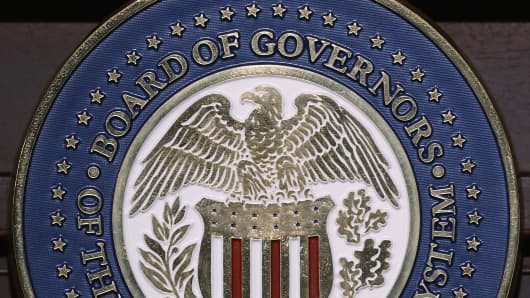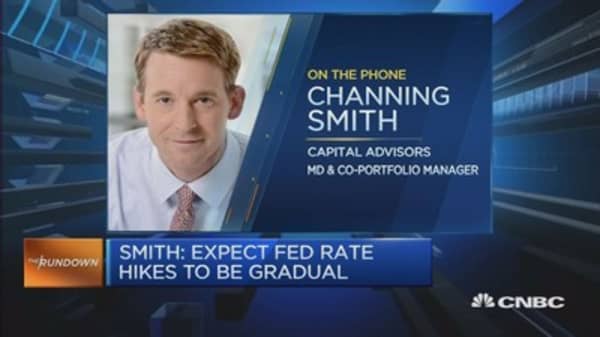These explanations are always given in terms of the Fed's mandate to deliver economic growth and employment creation in an environment of acceptable price stability.
Keeping that in mind, the question is: how could the Fed justify the timing and the extent of its announced transition from a long process of crisis management to conditions of a stabilized economy and an apparently resilient financial system?
Here are some thoughts on how that discussion could proceed.
Starting with demand and output, one can observe that over the last four quarters the U.S. economy has been growing at an average annual rate of 2.7 percent, almost an entire percentage point above the estimated potential growth rate of 1.8 percent in the last three years. [A potential growth rate is consistent with a noninflationary utilization of labor force and the physical capital stock.]
Good growth and stable prices
On that evidence, the U.S. economy is doing quite well. But there is even better. If the growth potential is estimated as a sum of current growth rates of labor force and labor productivity – a total of about 1 percent – then the actual growth rate of 2.7 percent suggests an economy that is strongly pushing against its physical limits to noninflationary demand and output.
Costs and prices are not indicating such capacity pressures, although the most recent survey evidence points out that America's manufacturing and service industries are marking a solid pace of expansion. Activity in the service sector (about 90 percent of the economy) is particularly buoyant; indicators of employment creation, new orders, export sales and order backlogs are literally soaring. In spite of that, prices were roughly stable last month in the service sector, while they fell sharply in manufacturing businesses struggling with a strong dollar and international competition.
Read MoreFed faces 'great difficulty' hiking rates: Bob Doll
With that latest survey data, and the current headline consumer price inflation of 0.1 percent, it is very hard to make a convincing case of an overheating economy, or an economy headed for a cycle of accelerating inflation pressures.
That makes it tough for the Fed to advocate an imminent policy change, because bond markets, the public at large and the Fed's Congressional overseers are not receptive to the evidence that the core rate of inflation (consumer prices less food and energy) has been stuck at 1.8 percent since the middle of last year, and that the declining headline inflation was mainly the result of a strong dollar and collapsing energy prices (-15 percent in the year to June).
The Fed's present and former governors' warnings against complacency towards "temporarily" quiescent inflation and a "bubbly bond market" are in stark contrast to generalized deflationary scenarios. These "head-for-the-hills" market calls are based on single-digit energy prices, imploding Chinese economy, Europe's disintegrating monetary union, the uncontrollable spreading of Middle-Eastern and North-African violence and its ensuing refugee crises of biblical proportions.
Fed is itching to move
And then there is the dollar story – a strong currency having a direct impact on activity and prices in about one-third of the U.S. economy. Over the last twelve months, the dollar's trade-weighted exchange rate has appreciated by 20 percent. That is technically equivalent to a substantial monetary tightening, and it is one of the major causes of America's sharply declining headline inflation from 2.1 percent to 0.1 percent in the year to June.
The dollar's decline last week against the euro is unlikely to last. The euro rose on largely unanticipated progress in resolving the most acute aspects of the Greek debt crisis. But the key issues of massive Greek debt write-downs and the woefully inadequate governance of the euro have not been addressed at all. The ECB, therefore, has to keep the European economy afloat with huge asset purchases and a virtually free money. And that is bound to take some shine off the euro's latest rally.
Japan, for its part, wants another round of aggressive monetary creation to compensate for the failure of structural reforms and a frozen fiscal policy. That will strengthen the demand for dollar assets, as will China's push for a weaker yuan in an apparent quest for a "flexible," "market-determined" exchange rate.
Under these circumstances, signaling a policy shift with however slow and symbolic dollar rate hikes would just trim the sails of an already strong greenback that remains an undisputable safe-haven currency. If you don't believe that, just ask those who have been accumulating Uncle Sam's IOUs in the twelve months to May: India (+62.6 percent), Spain (+43.1 percent), South Korea (+32 percent), Germany (+21 percent), OPEC countries (+15.1 percent), etc.
Now, I have intentionally left serious problems of U.S. labor markets for the final part of the analysis that always underlies Fed's policy decisions. I am encouraged by indications that the Fed is not siding with those who take the headline 5.3 percent jobless rate as a full-employment unemployment rate. The actual unemployment rate is double the reported rate, and the number of people looking for stable employment is 16.5 million -- not 8.3 million -- of which more than 2 million (long-term unemployed) are at the risk of becoming unemployable.
Read MoreRon Paul: Fed may not hike because 'everything is vulnerable'
Acting alone, there is not much the Fed can do about structural labor force problems, because their solution requires structural policies (broadly available and affordable education, vocational training, relocation, etc.), but restricting access to credit, and raising the cost of credit, would not help either.
Investment thoughts
At the moment, reserve movements and interbank market conditions don't suggest any preparation for an imminent increase of the federal funds rate.
A virtually zero headline inflation rate, a slowing growth of unit labor costs (1.6 percent in the first half of this year), a large slack in labor markets, a strong dollar, weak export markets and well-anchored inflation expectations make it very difficult to justify a rate hike in the weeks ahead.
But whenever that rate hike happens, it won't be a non-event; it will mark the first phase of a tightening process that will cause asset re-pricing and reconsideration of investment projects. It would be imprudent to take such a policy change as a benign and inconsequential adjustment.
A growing economy and subdued labor costs will help the U.S. equities weather the storm of transition to a new monetary environment.
Michael Ivanovitch is president of MSI Global, a New York-based economic research company. He also served as a senior economist at the OECD in Paris, international economist at the Federal Reserve Bank of New York and taught economics at Columbia.





